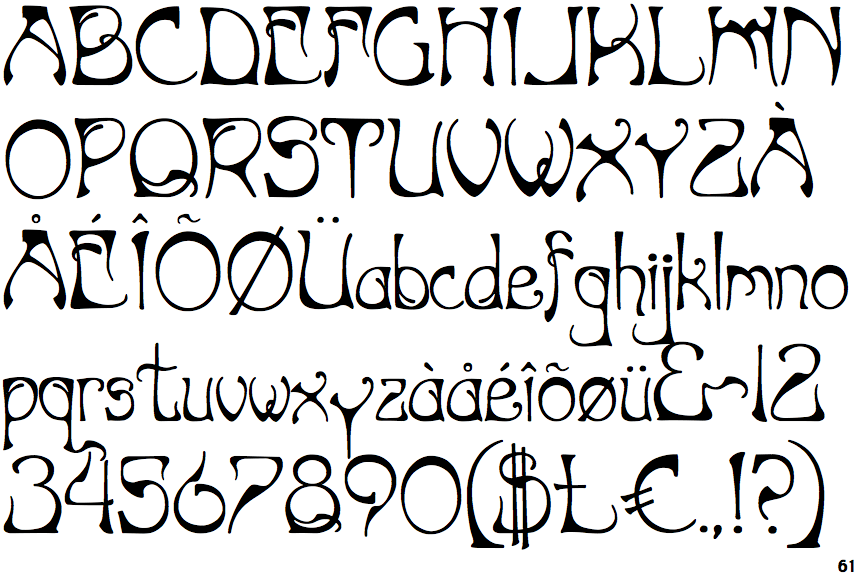
Some most important figures of this movement were, Alfons Mucha with designs where nature, the female figure and delicacy were the main elements of his works. This led to the Art Nouveau expanded in different supports of graphic arts such as book or magazine illustrations, posters, decorative panels, wallpaper, prints and even printing designs. The most characteristic feature of this new movement was its adaptation to modern life and its search for authenticity. Thanks to lithography, great popularity was achieved, it was becoming more and more common to see this type of design in jewelry, ceramics, fabrics, illustrations, etc. The most frequent motifs that were seen on this type of works were those that contained natural motifs such as leaves or flowers and, of course, female figures. This new current of design used curved lines and asymmetrical compositions in their work. The fonts that we will see next will help us visualize the characteristics of this movement. They adapted new techniques to their way of working, evolving both the designs and the form of commercial printing. The graphic designers and illustrators of this time, tried to introduce art as an element of everyday life. On this occasion, we are not only going to talk about the importance of this movement, but We will name you Art Nouveau typefaces so that you can add them to your typographic catalogue. This decorative style prospered internationally throughout its historical course.

This new artistic movement used nature, femininity, the use of geometric shapes and curved lines, as well as asymmetry, as references for the inspiration of its designs.

All this resulted in a perfect union between architecture, furniture and design.

This artistic movement took advantage of both the possibilities that new technologies offered, such as new materials and the combination of beauty and meticulousness. Art nouveau, It begins at the end of the XNUMXth century and the beginning of the XNUMXth, revolutionizing the artistic ideas of the time, drawing on a set of new aesthetic ideals and a drive for modernity.


 0 kommentar(er)
0 kommentar(er)
